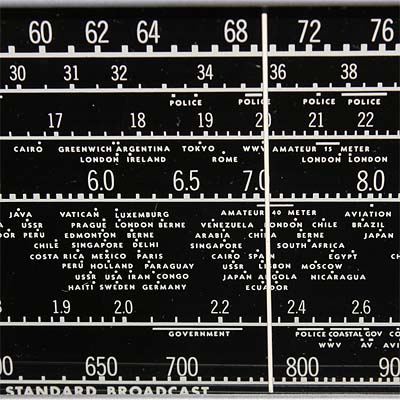
Some examples of boatanchor frequency dials.
Page started 04/22/2006. Last update 04/22/2006.
Boatanchors run the gamut in tuning dial accuracy. Some of them, like the Heathkit Mohican GC-1 or the Hallicrafters S-38, barely have the accuracy to tell you within 500kHz of your tuned frequency. Others can tell you within 5 kHz, and a very few can tell you to the closest 1 kHz.
Just kind of guessing off the top of my head, I would say that an average, well calibrated, boatanchor might be able to indicate the tuned frequency within 50 kHz. But, that is just a guess.
As a rule of thumb, you can "eyeball" things on a well calibrated receiver and make a good guess at about 1/4 the graduated marking spacing on an average dial. This means if the finest graduations are 100 kHz you can guestimate the frequency to +/- 25 kHz. The wider the graduations are spaced the better you can use this technique, the closer they are together the less you can. On very close spaced graduations you are sometimes lucky to get +/- 1/2 the graduation value.
All of the above is based on a well calibrated receiver with an accurate dial. In reality I think this is a small percentage of the rigs in use. How many times when you tune to WWV on 10.000 MHz does the dial show you something like 10.050 MHz? Or a couple of needle widths off?

The Hallicrafters SX-62 is a very good, big old BA. It is sensitive, has a broad tuning range, has some nice features, and it has awesome audio. But, it does not have a highly accurate dial, and it does not have a bandspread dial.
As can be seen above, the tuning dial has rather course frequency markings. At 2.000 MHz the finest graduations are 50 kHz. At 7.000 MHz the finest are 100 kHz. Around 20.000 MHz the finest are 200 kHz, at 30 MHz the finest are 500 kHz.
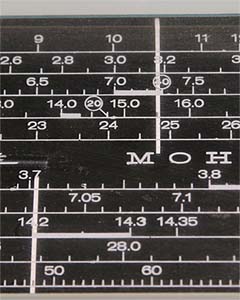
This image is a portion of the dial from a Heathkit GC-1 Mohican receiver. The top half is the main tuning dial, the bottom half is the bandspread dial. You can see there are two different pointers, one for each scale.
Most radios with a bandspread have a physically separated dial for the bandspread, but not all.
The bandspread is a technique that spreads small portions of a band out over a larger dial area, making it possible to put many finer graduations on the scale. When used correctly a bandspread dial can greatly increase the potential tuning accuracy of a radio. In the case above to 5 kHz resolution. However, bandspread dials are normally calibrated to work over specific small bands, often the amateur bands of 80M, 40M, 20M, 15M, and 10M. Bandspread dials can be used outside their calibrated ranges, but then the indicators on them will not read correctly, so they are good for fine tuning, but not necessarily accurate frequency readout. Yes, there are ways to use either known external frequency sources (radio stations) or crystal calibrators to increase the usefulness of bandspreads outside their specific calibrated bands, but this is sometimes a little clunky.
Without the bandspread dial this radios finest graduations are 100 kHz at 3.200 and 7.000 MHz, and 500 kHz at 15.000 and 25.000 MHz
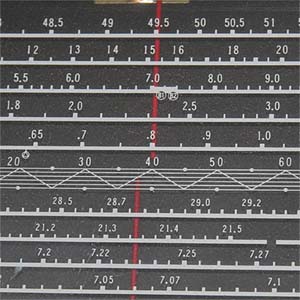
Here is another radio that combines the main tuning indicator and the bandspread behind a single piece of glass. Of course, there are two indicators.
You see that without the bandspread 100, 200, and 500 kHz are the finest graduations on the shortwave bands.
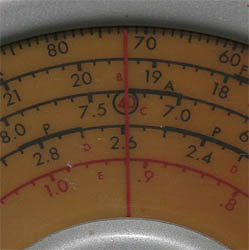
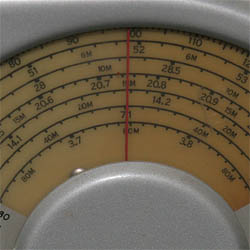
These are the Main Tuning (left) and Bandspread (right) dials of a National NC-173. It has main dial graduations at 50 kHz, 100 kHz, and 200 kHz in most short wave bands. The bandspread provides graduations as fine as 10 kHz in some of the amateur bands.
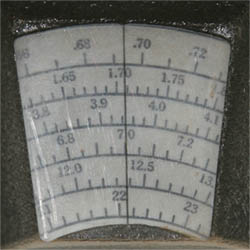
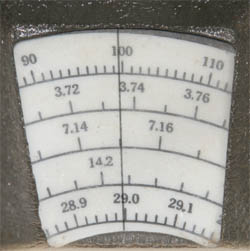
Tuning and bandspread for the Hammarlund HQ-129-X. Main dial graduations of 10, 20, 50, 100, and 200 kHz. Bandspread graduations 10 and 20 kHz on the amateur bands.
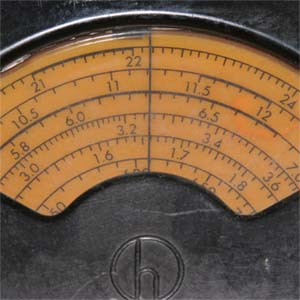
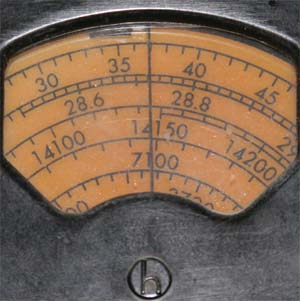
The tuning and bandspread dials of a Hallicrafters SX-28. Main dial graduations of 10, 50, and 100 kHz. Bandspread graduations of 10 or 20 kHz.
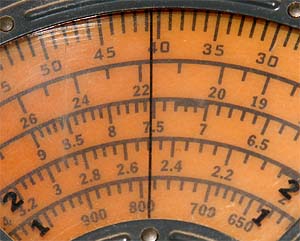
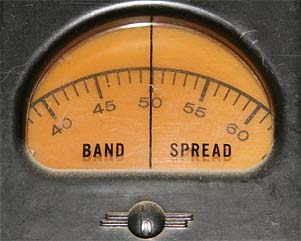
This is a Hallicrafters S-20R. Main dial graduations of 50, 100, 500, and 1000 kHz. The bandspread dial has no calibrations other than a log scale.
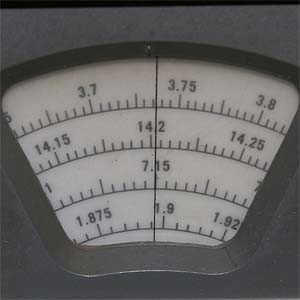
This is the dial of a Hammarlund HQ-170. The 170 is a very nice ham band only receiver, not top of the line, but still very good.
As you can see, graduations of 5 kHz are on these dials. The radio also includes an internal 100 kHz crystal calibrator to calibrate the dial. A crystal calibrator can be found in almost any type of receiver, general comms or specialized.
There you go, a quick look at some basic boatanchor tuning dials and scales. You can see that finding a specific frequency in a crowded band could be challenging. Trying to be on a specific frequency before a transmission starts can be even worse. And so, a good heterodyne frequency meter can make life easier. Sure, you can add a digital display to any of the radios shown above, but that would not be staying in the realm of Hollow State, now would it?
 Back to my BC-221 page.
Back to my BC-221 page.
E-mail me at: T_O_K_E_N_@hotmail.com